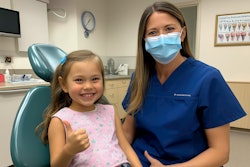
Understanding parents' dental anxiety and oral health literacy, which may be affected by income and other factors, may help dentists build trust with them and encourage early, regular dental visits for their children. The study was published in BMC Oral Health.
During a child's first dental visit, dentists should assess these factors and the family's sociobehavioral characteristics using appropriate scales and semistructured interviews, the authors wrote.
"By focusing on these factors and providing appropriate support and interventions, oral healthcare professionals can work towards enhancing the overall oral health of children and creating a positive impact on their dental care experiences," wrote the authors, led by Ravi Kumar Gudipaneni of the Jouf University College of Dentistry in Saudi Arabia (BMC Oral Health, July 27, 2024, Vol. 24, 853).
For this study, 430 parents of children age 14 and older were invited using a systematic random sampling method. Pediatric Dental Anxiety (PDA) was assessed with the Dental Anxiety Scale-Revised (DAS-R), and parents' Oral Health Literacy (OHL) was measured using the Rapid Estimate of Adult Literacy in Dentistry-30 (REALD-30).
Relationships among participant characteristics, PDA, and OHL were analyzed using statistical tests. Additionally, binary regression analysis was performed to identify predictor variables for PDA and OHL.
Children with at least one untreated decayed tooth were 2.5 times more likely to have PDA (95% confidence interval [CI], 1.37 to 4.37). Children who visited the dentist within the last six months had a 93% lower likelihood of having PDA (adjusted odds ratio [AOR], 0.07; 95% CI, 0.03 to 0.18), according to the results.
Parents ages 20 to 25 were 81% less likely to have OHL compared to those over the age of 30 (AOR, 0.19; p, 0.038). Parents with an average family income were 52% less likely to have OHL compared to those in the high-income group (AOR, 0.48; p = 0.013).
Additionally, parents of children who visited the dentist within the last six months were 34 times more likely to have OHL than those whose children had not visited the dentist in over a year (AOR, 34.94; p <0.001), according to the results.
The study, however, had limitations. Since it was a cross-sectional study, it cannot establish a temporal relationship between outcome and exposure variables, the authors wrote.
"Understanding the risk indicators of PDA and OHL can aid oral healthcare professionals in recognising challenges and effectively engaging with parents to build trust and promote early and regular child dental visits, thereby improving their children's oral health," Gudipaneni et al wrote.




















